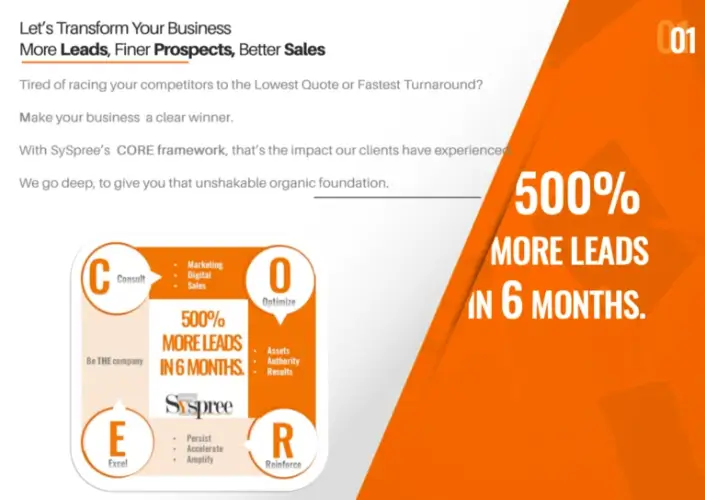15 Min to Enhance Business Efficiency with Data Visualization Solutions

In today’s fast-paced business environment, decision-makers face the daunting task of sifting through mountains of data to uncover actionable insights. Transforming this information into visually compelling narratives is not just an option—it’s a necessity. Enter data visualization, an indispensable tool that turns complex datasets into intuitive visual stories. This blog post will explore how your business can maximize insights using data visualization, focusing on frameworks, strategies, and real-world applications tailored to meet your enterprise’s ambitions.
Table of Contents
Understanding the Value of Data Visualization
What Is Data Visualization?
Data visualization is the graphical representation of information and data. Through the use of visual elements like charts, graphs, and maps, data visualization tools and technologies provide an accessible way to understand trends, outliers, and patterns in data.
Why Your Business Needs It
For businesses generating over USD 20,000 monthly, the challenge is not the lack of data but the ability to use it effectively. Without proper visualization, opportunities are often hidden beneath layers of raw numbers. The implication? You might be missing critical insights that could drive growth, inform strategy, and differentiate you from the competition.
Pain Points of Ignoring Data Visualization
- Information Overload: With spreadsheets and data reports piling up, information gets lost, leading to poor decision-making.
- Missed Opportunities: Without clear insight into trends, businesses risk missing lucrative opportunities for growth.
- Wasted Resources: Investing in data collection without the ability to interpret it means wasted time and money.

Strategies to Maximize Business Insights with Data Visualization
1. Define Your Data Goals
Before visualizing any data, set clear objectives. Are you trying to uncover consumer trends, enhance operational efficiency, or improve product offerings? Defining these goals ensures you’re visualizing the right data to support strategic decisions.
Action Tip:
Use SMART criteria (Specific, Measurable, Achievable, Relevant, Time-bound) to set data visualization goals that align with your business objectives.
2. Choose the Right Tools
There’s a myriad of data visualization tools available, from Tableau to Power BI, each offering unique strengths. Selecting the right tool involves understanding your specific business needs, data volume, and user skill level.
SySpree’s Expertise:
At SySpree, we guide businesses through selecting and implementing the best tools suited to their needs, ensuring seamless integration with existing systems.
3. Focus on Clarity and Simplicity
The most effective visualizations simplify complex data into clear, digestible formats. Avoid clutter and aim for graphics that highlight the data’s key message. Remember, the goal is to tell a story with your data, not to overwhelm your audience.

Storytelling with Data:
Consider framing your data narrative like a story—introduce the problem, show progression through data, and conclude with informed actions or insights.
4. Utilize Real-Time Data
For an edge, incorporate real-time data into your visualizations. This approach provides up-to-the-minute insights that can inform immediate business decisions, enhancing agility and responsiveness in dynamic market environments.
SySpree’s Real-Time Solutions:
SySpree’s solutions enable businesses to integrate real-time data feeds into their visualization dashboards, providing up-to-date insights that empower prompt decision-making.
5. Customize for Your Audience
Different stakeholders may require varying levels of detail and focus. Segment your data visuals based on the audience—executives may need high-level summaries, while analysts might require in-depth reports.
Customization at SySpree:
Our expert team at SySpree works closely with clients to develop tailored visualization dashboards that meet the unique needs of different business segments.

Real-Life Applications and Success Stories
Let’s delve into how businesses are leveraging data visualization for impactful results.
Case Study: Retail Optimization
A mid-sized retail chain enlisted SySpree to maximize their sales insights through data visualization. By mapping foot traffic patterns and correlating them with sales data, the company identified optimal display placements. The result? A 15% increase in sales within the first quarter of implementation.
Hypothetical Scenario: Financial Services Firm
Imagine a financial services firm struggling to interpret investment data for clients. Through data visualization, they transform complex portfolios into interactive pie charts and trend graphs, allowing clients to grasp their financial health quickly. Not only does this enhance client satisfaction, but it also solidifies trust, driving customer retention.

Frequently Asked Questions (FAQ)
What are the best practices for effective data visualization?
- Start with clear objectives and know your audience.
- Use the right chart type for the data you have.
- Keep visuals simple and avoid unnecessary clutter.
- Emphasize data with contrasting colors and sizes to highlight key points.
How can data visualization drive business growth?
By providing clear insights, data visualization enables informed decision-making, identifying opportunities for growth, optimizing operations, and enhancing customer experience.
Can data visualization be integrated with existing analytics tools?
Yes, many data visualization tools are designed to integrate seamlessly with existing analytics and business intelligence platforms.

Conclusion
Data visualization isn’t merely an option—it’s a necessity for businesses aiming to leverage data for growth and competitive advantage. By turning data into visual narratives, companies can unlock hidden opportunities and optimize their operations efficiently.
Are you ready to transform your data insights into growth strategies? Partner with SySpree for cutting-edge data visualization services tailored to your business needs. Contact us today to learn how we can help you harness the power of data.
Other blogs you might like –




